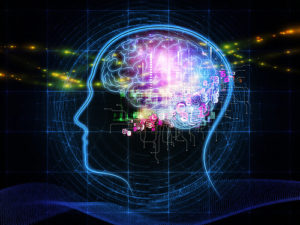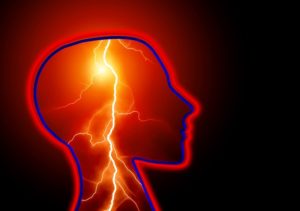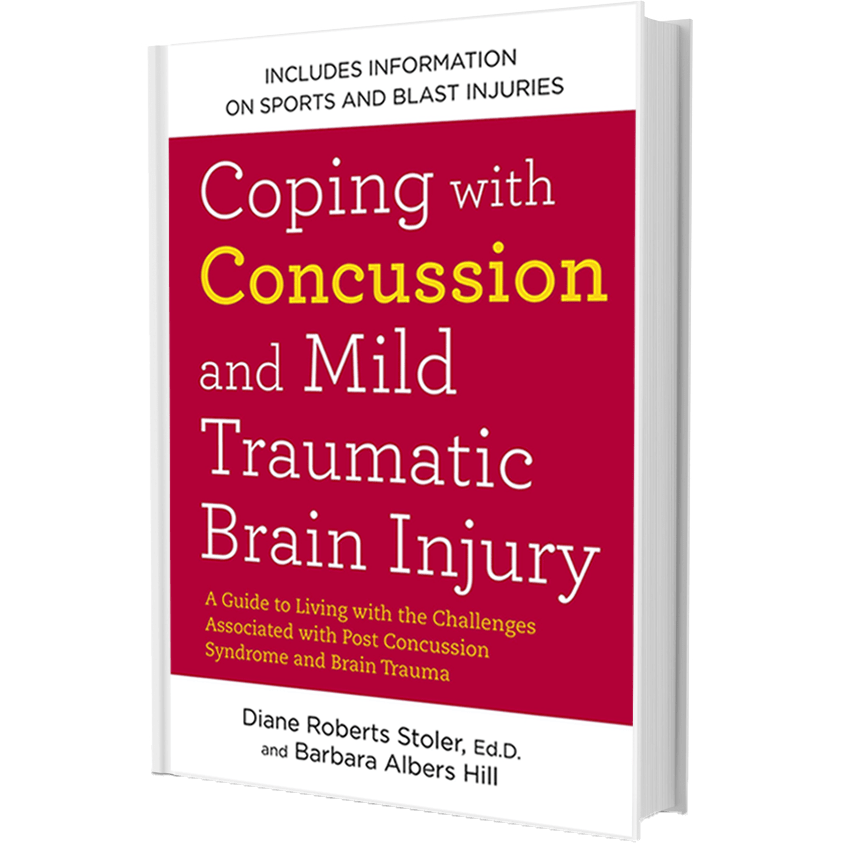Stroke / Aneurysm Treatment
Stroke / Aneurysm: Neurofeedback as a Treatment
In my previous blog on stroke / aneurysm awareness, the focus was on the 11 effective treatments. In a stroke / aneurysm, the brain has been injured in a specific neural hub that controls certain brain functions such as speech, mood, memory, balance, and the ability to walk or move a limb. The various treatments are designed to target the specific disabilities that result from the injury. By doing the various exercises involved in any of the treatments, the primary goal is to regain the function. The secondary goal is to, ideally, repair the brain.
In this blog post, I am going to focus on the benefits of neurofeedback, a treatment with which I am very familiar based on both my own personal experience following my aneurysm and from using it with my patients. The combination of physical therapy or speech therapy along with neurofeedback, with a focus on repairing brain function and dysregulation, produces a more effective and efficient rehabilitation of the disability, such as the ability to walk again. Unfortunately, many people, including neurologists and rehabilitation specialists, are either totally unaware of neurofeedback, or they still wrongly believe that it is in the experimental phase.
 In previous blogs, I have explained how neurofeedback works, and in future blogs I will go into detail about the various types of neurofeedback. In this blog, I wanted to give an example of a positive outcome of neurofeedback used as a treatment for stroke. I am currently treating a patient for his left side paralysis which has made him reliant on a wheelchair, resulting from a stroke. I shared my previous blog on Stroke / Aneurysm Awareness Month with him, which covered the 11 effective treatments currently being used to help stroke patients. Based on what he and his wife learned from the blog, both of them decided that they want the world to know how neurofeedback works in conjunction with all of the other treatments and how effective it truly is. To help spread the word, my patient, Mr. XXX, has given me full permission to tell his story.
In previous blogs, I have explained how neurofeedback works, and in future blogs I will go into detail about the various types of neurofeedback. In this blog, I wanted to give an example of a positive outcome of neurofeedback used as a treatment for stroke. I am currently treating a patient for his left side paralysis which has made him reliant on a wheelchair, resulting from a stroke. I shared my previous blog on Stroke / Aneurysm Awareness Month with him, which covered the 11 effective treatments currently being used to help stroke patients. Based on what he and his wife learned from the blog, both of them decided that they want the world to know how neurofeedback works in conjunction with all of the other treatments and how effective it truly is. To help spread the word, my patient, Mr. XXX, has given me full permission to tell his story.
Neurofeedback Success Story
Mr. XXX is a highly intelligent 71 year old male who has been extremely active throughout his entire life. Three years ago, he had a blood clot on the right side of his brain. Because of its location, he did not lose the ability to speak, nor did he experience any impairment of his cognitive abilities. Rather, he lost the ability to move both his left arm and leg. His only means of mobility, therefore, became a wheelchair. In addition, he has been in chronic pain in these affected limbs. Over the last three years, he has had extensive physical and occupational therapy, neither of which were successful, and this caused Mr. XXX to become more and more despondent and depressed.
Introduction of Neurofeedback
Mr. XXX had originally heard of neurofeedback from his grandson, who was using neurofeedback as a treatment for his ADD. The family members then asked the grandson’s neurofeedback practitioner if neurofeedback could be helpful for the symptoms of a stroke. The practitioner told them yes, and then referred Mr. XXX to me.
Originally, Mr. XXX came in for a consult to discuss his symptoms and what methods I would recommend for him to regain his life, including the ability to use his left arm and walk again. We discussed biofeedback and various types of neurofeedback. He asked how long the treatment would take and whether his insurance covered this method.
Frequency of Neurofeedback Treatments
I explained that for someone like his grandson with ADD, the number of sessions is typically 20-40 with a person going twice a week. Some insurances cover neurofeedback. See more on that below. The key difference between ADD and a brain injury, such as a stroke/aneurysm, is that with ADD the brain is NOT damaged. The neural connections are intact but there is dysregulation of specific brain waves. In a brain injury, the key word is “injury.” Often, brain tissues, neural connections, and hubs are damaged and need to be repaired, while the dysregulation of the brainwaves needs to be promoted. Because of the brain’s neuroplasticity, which is its ability to repair itself, with proper treatment, the brain can repair brain tissue and neural connection and hubs, along with the brainwave dysregulation. Neurofeedback can and does do this effectively along with the various treatment for specific areas. I call myself a Catalyst for Change℠, and based on my own personal experience and the experiences of my patients, I strongly feel that neurofeedback, in conjunction with other very effective methods, is a Catalyst for Change℠as well.
All of this information was conveyed to Mr. XXX, along with the story of the cerebral bleed in my left hemisphere and my recovery, which utilized neurofeedback. I had cognitive deficits and numerous neuropsychological testings. In the areas of deficit, I was in the 6th percentile in ability for eight major categories. I was not paralyzed like Mr. XXX, but instead I had muscle weakness on my right side which prevented me from walking properly. Because my stroke was on my left side, where speech and cognitive ability is located, I was told by all my doctors that I was permanently brain damaged and would never regain my cognitive ability or improve. After two years of neurofeedback, I was able to return to my practice of as a neuropsychologist and was able to dance and regain my previous life.
Insurance Coverage of Neurofeedback
Regarding insurance, some insurance carriers will provide coverage for certified practitioners and/or mental health professionals. The majority, however, often do not cover these services. I am a certified neuropsychologist using treatment methods that are frequently accepted, however, the variety of plans and coverage provided varies dramatically from patient to patient, so confirmation of whether a plan will cover these services is needed.
Neurofeedback Success
Mr. XXX has now been working with me for a little over a year now. He has little or no pain, he is able to move his leg and arm, and his fingers are more relaxed. Our goal is to have him out of his wheelchair by this coming June for a special family event. In conjunction with our work, he is doing muscular biofeedback with another clinician along with his ongoing physical rehabilitation at a local rehabilitation hospital.
 The clinical director at the rehabilition hospital saw Mr. XXX recently and was amazed at his progress. Mr. XXX told her about the neurofeedback and how, in combination with his physical therapy, he had made enormous improvement in the last year. The director said that she had heard about neurofeedback and understood it to be a relatively new method. Mrs. XXX quickly chimed in that it has been around for more than 30 years and that I, Mr. XXX’s neuropsychologist who was a stroke survivor, had used it successfully over 20 years ago. The director was amazed at hearing this information. Sadly, the majority of rehabilitation hospitals in the U.S. do NOT provide neurofeedback as part of their comprehensive treatment program.
The clinical director at the rehabilition hospital saw Mr. XXX recently and was amazed at his progress. Mr. XXX told her about the neurofeedback and how, in combination with his physical therapy, he had made enormous improvement in the last year. The director said that she had heard about neurofeedback and understood it to be a relatively new method. Mrs. XXX quickly chimed in that it has been around for more than 30 years and that I, Mr. XXX’s neuropsychologist who was a stroke survivor, had used it successfully over 20 years ago. The director was amazed at hearing this information. Sadly, the majority of rehabilitation hospitals in the U.S. do NOT provide neurofeedback as part of their comprehensive treatment program.
As a neuropsychologist, board certified health psychologist and survivor of a stroke / aneurysm, it is my hope and prayer that by the May 2016 Stroke / Aneurysm Awareness Month, neurofeedback will be more widely known and used successfully in conjunction with the wide variety of effective treatments as a Catalyst for Change℠ to help you regain your life. I regained my life with this resource and so have the patients that I have treated using neurofeedback. There is a Way! ®
Have you or a loved one had a stroke / aneurysm? Would you like to learn more about the various treatments for a stroke / aneurysm? Do you need help finding a neurofeedback practitioner in your area? Leave us a comment!
Dr. Diane®
Copyright © 2015 Dr. Diane® Roberts Stoler, Ed.D.



Would love info on a practitioner in my area. Charlotte, NC
Stroke march2014 left side paralysis
Hi Kim,
I sent you an email with some info 🙂
I am very interested. My brother suffered his stroke 15 months ago. It was caused by a dissected carotid artery,it was a big one. He has expressive aphasia and right side paralysis. He has made a lot of progress but has plateaued and doesn’t wanna do his therapy with me at home. We need some hope.
Hi Kevin,
I just emailed you with some information!
I would like more info…my mom had a stroke 5 months ago.live in Honolulu Hawaii.
Hi Eric,
Look out for an email from me with more information!
I would love to find a practioner in Charlotte, nc area.
Hi Tabitha,
I found a practitioner. Here is their website: https://www.siberimaging.com/
Good luck!
Respected doctor
My father had a stroke in the year 2011. He had short term memory loss and demensia. Kindly suggest me some neuro feedback. He is under treatment with neurologist but as the time pass he is losing in his memory. If u had any clinic in India nearby Delhi or chandigarh. Kindly suggest me.
Vijay, I understand what your father is going through. I do have a contact in India, Srinivasan Nidamangalo. However, his office is in Chennai, which I realize is a long distance from Delhi. If you are interested, we can do remote, virtual neurofeedback. To get started, please fill out a consult form. Thank you.
i am an Occupational Therapist who suffered a stroke 30 years ago, am still practicing, and would love to use this with my patients! Please send me info!
Would love a contact in Georgia. Left side weakness after stroke. Would like more info and a practitioner in Georgia
Hi Rosanna,
Contact Dr. Richard Soutar at New Mind Center, 702 Macy Drive Roswell, GA 30076 at (678) 516-5942.
There is Help and Hope!
– Dr. Diane
Does it work work on a seizure disorder
Dear Dr. Diane
My husband(58) had a major bleed stroke
2 years ago, emergency neurosurgery and survived. He is in remarkable condition , with no paralysis. He was a lawyer and now has severe aphasia. He can converse some but
Sometimes i realize information is ‘gone’ .
( ex: during a word game recently, he did not know what a noun was)…
He had several sessions of mindfulness stress reduction therapy. the therapist agreed he made alot of progress. He was ready to stop and she thought it ok. We had no coverage for it either . Im glad we did it.
It helped his acceprance and helped me as caregiver. This is such a hige life change.
His vision was affected but he has had
Neuro opthomology surgery and prism lenses. How can i help him ??? He has lost his interest in life ? He golfs w a friend
sometimes and reads large print books…
Thats great. I miss my husband… As he was.
I can and have accepted yhis but want to go further…
My daughter, Christie, 39, suffered a ruptured aneurysm October 6, 2014. She was given 0% chance of survival. By the Grace of God she survived. The blood that had moved her brain the night before, was totally gone the next morning! The doctor said it was Divine Intervention because there was no place for the blood to go!
Dr. Han operated and coiled the aneurysm behind her left eye. They found two more. Coiled the one behind her right eye and are watching the smaller one behind the original one. She suffered a small stroke when the first coiling collapsed and it has to be recoiled. She developed a shaking in her right hand.
Her memory and short term memory were affected. She has regained some of her memories, but doesn’t even remember her wedding three years prior to the rupture.
She is on disability and would love to return to being an RN in Cardi/Vascular ICU. She had attended TCU prior to her rupture for a CRNA degree but missed cutoff by 3 points and she had to leave with a Masters. She kept saying she was having trouble remembering things and the doctors said her aneurysm could have been leaking. Three months later is when the rupture occurred. She is also wanting to start a family.
Can she be helped by nuerofeedback? I’m not sure where you are located, but we are in the Tulsa, OK, area.
Thank you for your attention to this matter.
Yes Neurofeedback can help your daughter. I’d recommend scheduling a consult with Dr. Diane via Zoom. Dr. Diane will take the time to explain your daughters symptoms, causes, and recommend appropriate treatment. At the end of the consult, Dr. Diane can locate someone in your area to help your daughter or decide if you can continue to work remotely together. Please call our office to schedule at 800-500-9971, their is a way!
I am 74. I survived a stroke in 2009which left me paralyzed ,left arm and leg.Help with physical therapy has not been consistent My speech and language facility has not been impatiently which I am very grateful. I used to be a foreign language teacher and my foreign language skills are still intact. But I would Love to abandon my wheelchair! I have Kaiser Permanente health insurance in Southern California.Can you help me?
Using Neurofeedback and the Burdenko Method (burdenko.com) can help you abandon the wheelchair. Please check LENS (https://main.ochslabs.com/ and https://www.burdenko.com/) for providers in your area.